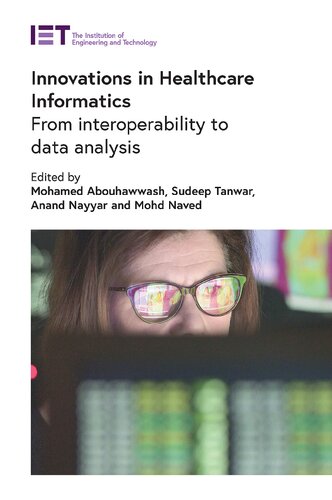

Most ebook files are in PDF format, so you can easily read them using various software such as Foxit Reader or directly on the Google Chrome browser.
Some ebook files are released by publishers in other formats such as .awz, .mobi, .epub, .fb2, etc. You may need to install specific software to read these formats on mobile/PC, such as Calibre.
Please read the tutorial at this link: https://ebookbell.com/faq
We offer FREE conversion to the popular formats you request; however, this may take some time. Therefore, right after payment, please email us, and we will try to provide the service as quickly as possible.
For some exceptional file formats or broken links (if any), please refrain from opening any disputes. Instead, email us first, and we will try to assist within a maximum of 6 hours.
EbookBell Team

4.8
44 reviewsImproved computing technology combined with IoT-enabled smart devices and the digitization of personal health records (PHRs) has created vast quantities of patient data in recent years. The availability of this data and new processing methods are enabling clinicians to provide better care for patients and has sparked a growing interest in consumer health informatics (CHI) and in the potential of patient-generated health data (PGHD).
This edited book looks at the current and future trends in CHI and PGHD for various health informatic technologies. It is hoped that this analysis of the existing applications will inform network management and data analytics for healthcare systems. The book explores new models for processing this data to infer new results and outlines the many challenges faced, such as interoperability, consumerisation, fostering two-way communication, digitisation of healthcare systems in clinical settings, and patient engagement.
The book presents advances in healthcare informatics technologies, by highlighting improvements and introducing emerging technologies and platforms for different applications in healthcare. The editors focus on methodologies, theories, tools, applications, trends, challenges, and case studies in and of healthcare informatics.
Bringing together chapters on bioinformatics, augmented reality, image processing, wireless smart wearable devices, communication technologies (and related security and privacy solutions), the editors provide a cohesive review of healthcare informatics, which will be a valuable reference for researchers, industry practitioners, and related government agencies staff.